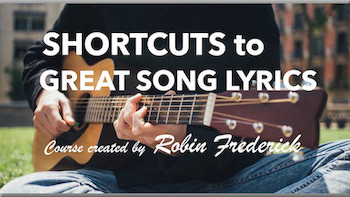SONG GUIDE: “Trouble With A Heartbreak” – Jason Aldean
SONG GUIDE: “Slow Down Summer” – Thomas Rhett
If you were a fan of Fleetwood Mac, Hall & Oates, Journey, or Richard Marx, then today’s Country hits are right up your alley. Like the Soft Rock hits of the ’70s through the ’90s, the Contemporary Country genre features memorable melodies with great hooks, well-crafted lyrics, and body-swaying, mid-tempo grooves.
“Trouble With A Heartbreak” by Jason Aldean and “Slow Down Summer” by Thomas Rhett reached #1 and #2 on the Country charts and I can’t help drawing a few comparisons to the big, melodic hits of the 1970s.
So let’s take a deeper look and see what gives these songs their huge appeal. Along the way, maybe we’ll be able to answer the question: Do they really share DNA with the soft rockers of past decades?
Listen to the song. Read the lyrics.
“Trouble With A Heartbreak” – Jason Aldean*
Songwriters: Brett Beavers / Tully Kennedy / Kurt Allison / John Robert Morgan
Watch the lyric video on YouTube.
Read the lyric here.
“Slow Down Summer” – Thomas Rhett
Songwriters: Rhett Akins / Ashley Gorley / Thomas Rhett / Sean Douglas / Jesse Frasure
Watch the video on YouTube. (Turn on CC for lyrics.)
Read the lyric here.
GENRE/STYLE: (Contemporary Country)
(What is a genre? Watch this video.)
Both “Trouble With A Heartbreak” and “Slow Down Summer” feature huge choruses, memorable melodic hooks, and Lost Love themes that have been a Pop staple for decades. No crying in your beer here… If it weren’t for the Southern twang in their vocals, Aldean and Rhett could give any Pop Ballad icon a run for their money.
Currently, the Pop genre itself is shifting toward a more rhythmical style. The influence of Electronic Dance Music (EDM) and Hip-Hop have pulled today’s Pop away from the Big Ballad of previous decades. For audiences that miss a soaring chorus melody and an expressive lyric, these two Country hits are like coming home.
SONG STRUCTURE
Both “Slow Down Summer” and “Trouble With a Heartbreak” are based on a standard song structure. Here’s “Slow Down Summer.”
VERSE 1 / PRE-CHORUS / CHORUS
VERSE 2 / PRE-CHORUS / CHORUS
BRIDGE / CHORUS
“Trouble With A Heartbreak” has a similar structure. This song form is based on the familiar Verse-Chorus structure that has delivered big hits since the late 1960s, but it now has a pre-chorus section, a more recent development.
A CLOSER LOOK AT THE PRE-CHORUS SECTION
From the 1970s to the 1990s, hit song choruses grew bigger and flashier. After a while, songwriters felt they needed a way to ramp up the energy from a conversational verse to the big emotion of a chorus. The pre-chorus was created to fill that need. Its function is a little broader now, but it’s still expected to add extra kick to the launch of the chorus. Here’s how these two songs did it.
1) Use a series of short, repeated melody phrases. You can hear this in the pre-chorus of “Trouble With A Heartbreak.” Check out the track (at :28) while you read the lyric.
Get out on this town,
Meet somebody new,
Get lost in the crowd
All I see is you
2) Raise the note range higher than the verse but keep it lower than the chorus. You can hear this in both of these songs. When voices rise, the emotional energy rises with them. But don’t give away the big release of the chorus by going too high for too long in your pre-chorus.
3) Write a lyric that raises the emotional stakes. Both songs do this, too. Here’s the pre-chorus of “Slow Down Summer.” The ticking clock is always good for creating a sense of urgency.
Yeah, we knew what was comin’
And laughed it off like it was nothin’
Oh, but time kept on runnin’ and runnin’ away
– Try It Now –
Listen to the pre-chorus of each of these songs to see how the melody and lyric prepare you for the chorus, build energy, or create anticipation.

LYRICS
THEMES: Contemporary Country music features a range of themes that tend to circle around relationships, family, good times, and country life. While there have certainly been plenty of tear-soaked, heartbroken Country songs, it’s not often handled with this kind of emotional detail and vulnerability, especially by male singers. (Keith Urban excepted.)
This approach is closer to some of the big lost-without-your-love ballads of the 1970s, like “How Am I Supposed to Live Without You” (Michael Bolton) or “Love Hurts” (Nazareth). “Trouble With A Heartbreak” focuses tightly on what the singer is feeling, with only passing references to standard Country images of beer and free-wheeling trucks.
“Slow Down Summer” sticks closer to the Contemporary Country lyric style, with more emphasis on specific storyline detail.
Your shades on my dashboard
Shoes on my floorboard
Lived in that old Chevrolet
Summertime is also a favorite theme of ’60s and ’70s songs. Chad & Jeremy’s “A Summer Song,” Stevie Wonder’s “Never Dreamed You’d Leave in Summer,” “Summer Breeze” by Seals and Crofts and many more topped the charts back in the day. But these Soft Rock hits tended to paint with a broader brush, while Rhett’s song drops the listener into the middle of a situation with depth and detail.
– Try It Now –
Write a verse or chorus lyric with a heartbreak theme. Describe the emotion in detail: How does it make you feel physically and emotionally? What does it make you feel like doing? What do you want to say to the person you’ve never been able to forget?
MELODY
SECRETS OF WRITING THE BIG CHORUS
Both “Trouble With A Heartbreak” and “Slow Down Summer” offer great examples of the Big Chorus, one that delivers a hefty punch of emotional and musical energy. Creating a chorus like this involves a couple of tricks, but it’s not rocket science. Here’s how these two songs did it.
HOW BIG IS “BIG”?
At eight lines and 30 seconds in length, the chorus of “Trouble With A Heartbreak” is BIG. The chorus of “Slow Down Summer” is only slightly shorter. In fact, with three repeats plus a tag at the end, these choruses eat up over half the running time of the song! The challenge is to keep these long choruses interesting for the listener.
CHANGE UP THE RHYTHM OF THE NOTES: Melodies consist of more than the note pitches. They also have note rhythm. Adding more notes (or less) per beat or using different groupings of fast and slow notes can keep your melody interesting and fresh.
You can hear this trick in “Slow Down Summer.” The chorus melody changes from the “skippy” rhythm of the first four lines to the faster, steadier word pace of the next two lines (“I put my jacket on your shoulder / Wishin’ the weather wasn’t …”). Then back to the rhythm of the opening lines.
THE INTERVAL LEAP: Also in both songs, you’ll hear a big upward jump in the melody at or near the beginning of the chorus.
In “Trouble with a Heartbreak,” the pre-chorus ends with the words “Don’t let anybody tell ya it’s gonna be easy.” The singer finishes that line on an A flat note. Then the chorus begins on a B flat more than an octave above. It continues to rise even higher on the first line (“And that’s the trouble with a heartbreak”).
The interval leap is just as noticeable in “Slow Down Summer.” The chorus melody kicks off with an upward jump of an octave from the end of the pre-chorus (“runnin’ away”) to the first line of the chorus (“what can I say”).
Big leaps like these grab the listener’s attention and deliver a huge jolt of energy. They play an important role in adding to the appeal of these songs. Drop an emotional lyric line on top and audiences love it!
USE MELODY PATTERNS: Although using variety in your melody can keep listeners from getting bored, too much variety can make your melody feel like it’s wandering around aimlessly. A melody with a combination of repetition and variety is a very good choice here.
Look for a melody structure that delivers something fresh to the listener’s ear every couple of lines but has enough repetition to be easy to remember. Here’s the melody structure of “Trouble With A Heartbreak.” It sounds like a complicated melody, but it has a simple structure with lots of repetition.
“Trouble With a Heartbreak” – Melody structure
VERSE MELODY
MELODY 1 Don’t let anybody tell ya it’s gonna be easy
REPEAT 1 Don’t let anyone tell ya they know what it’s like
When they say…
MELODY 2 Get out on this town
REPEAT 2 Meet somebody new
REPEAT 2 Get lost in a crowd
REPEAT 2 All I see is you
MELODY 1 Don’t let anybody tell ya it’s gonna be easy
_________
CHORUS MELODY
MELODY 1 And that’s the trouble with a heartbreak. It’s gonna hang around
MELODY 2 Leave you midnight breaking down, wonderin’ how…
REPEAT 1 Long that it’s gonna take, gettin’ over her
REPEAT 2 It’s a can’t-drown-whisky-down kinda hurt
MELODY 3 Yeah, you can burn them four wheels up that road
REPEAT 3 But there ain’t nowhere her memory can’t go
MELODY 1 That’s the trouble with a heartbreak
REPEAT 1 That’s the trouble with a heartbreak, heartbreak
The chorus melody of “Slow Down Summer” is similar in length and uses a very similar melody pattern. It’s a pattern that works for listeners because it has just the right amount of repetition and variation.
-Try It Now-
Listen to “Trouble With a Heartbreak” as you look at the melody structure above. Remember that the pattern only refers to the repetition of melody phrases. The lyric is changing on every line except the repeat of the hook/title. Listen for repeated lines in the melody. Print out the lyric and note where you hear repeated lines. Where do the lines vary?
If you haven’t done this before, listen a few times until you can hear the pattern of repeated melody lines. The ability to recognize melody patterns can be a huge help when writing and rewriting your own melodies!
CHORDS
“Slow Down Summer” features a repetitive 4-chord progression, closer to today’s Pop/Dance genre than Country or Soft Rock hits of the past. The chords—G, Em, Bm, C—circle around over and over throughout all verses and choruses.
“Trouble With A Heartbreak” is a four-chord song but not as repetitious as “Slow Down Summer.” There’s some variation between the verse and chorus chord progressions, but it’s still a basic progression that’s easy to play.
Here are the chords and lyrics for “Trouble With A Heartbreak.”
SO… IS CONTEMPORARY COUNTRY REALLY TODAY’S SOFT ROCK?
The answer is, mmm… yes and no.
LYRICS: The lyric themes hark back to the romantic, heartbroken power ballads of earlier decades: a lost love too strong and too perfect to be forgotten. This is the theme that gave us Power Ballad hits like Harry Nilsson’s “Without You,” “You’ve Lost That Loving Feeling” by The Righteous Brothers, and “Right Here Waiting” by Richard Marx.
However, the style of the lyric writing with its detailed description and intimate revelation is closer to the contemporary Singer-Songwriter genre than the broad, direct statements of a song like “Without You.”
MELODIES: The big choruses in these two songs are very appealing to fans of the lost-in-love ballads of the past. But, unlike earlier hits, both of these songs feature very contemporary melodies. There’s more momentum, fewer pauses between lines, more melody patterning, and loads of rhythmic interest in the melodic phrases.
MY CONCLUSION
Like many of today’s hit songs across all genres, these two songs draw heavily on earlier styles from the ’60s to the ’90s. Very few (if any) hits are completely original. Listen closely to any successful song and you’ll hear echoes of what has gone before.
Songwriting evolves slowly over time, influenced by the taste of both creators and listeners. So I don’t think these two songs are doing anything other than standing on the shoulders of the giant hits that came before. They’re a perfect blend of old and new, choosing the best from all that’s out there.


